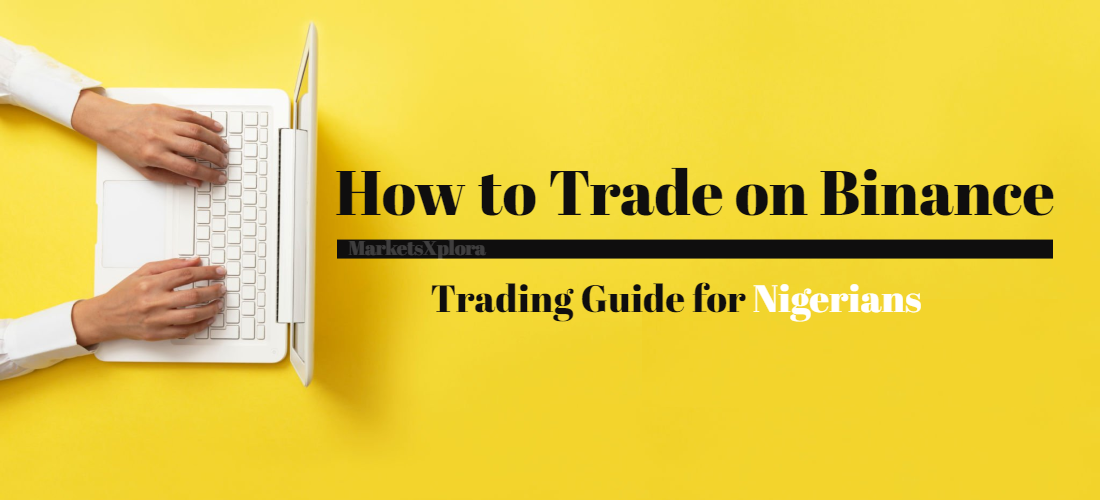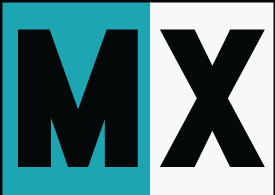
Binance has become the world’s largest cryptocurrency exchange, allowing people to buy, sell, and trade hundreds of digital coins. For Nigerian traders new to crypto, Binance offers an easy yet powerful platform to participate in this rapidly-growing market.
However, stepping into the crypto world can feel complex for beginners. In this guide, I’ll show you everything required to set up a Binance account, make your first trade, and start your crypto trading journey in 2025.
How to Trade on Binance – Getting Set Up
To begin trading on Binance, you’ll need to download their app for your iOS or Android device, or visit Binance.com and click on “Register“.

Creating an account only requires an email or phone number, password, and confirming some identity details.

Binance will ask for legal name, date of birth, and country. You’ll also need to upload a photo ID to activate withdrawals and trading. This ID verification improves security and prevents financial crimes.
Once your account is created, you need to fund it to begin trading. Binance offers multiple options to suit Nigerians, including direct bank transfers through an app like Flutterwave, as well as debit/credit card payments. You can also use Binance Peer-to-Peer (P2P) trading to buy coins directly from other users using naira. This avoids international transaction fees or card charges.
It’s also important to understand crypto wallet addresses, where your purchased coins are stored. Each transaction on Binance generates a unique “public key” address. It’s vital to double check this string of numbers and letters before sending funds. Security precautions like 2-factor authentication can also be set up to help protect your account.

Now you have the basics – an ID-verified Binance account funded and ready to start exchanging crypto assets and taking part in this exciting new marketplace for Nigerians!
In the next section, we’ll walk through making your very first trades…
Making Your First Trade on Binance
Admittedly, looking at the trading screen on Binance can look overwhelming initially. But I’ll break it down into elements and make it easier for you to understand.
First, simply focus on straightforward spot trading rather than risky futures or margin trading. The default spot trading lets you exchange one crypto for another, like swapping naira for USD. Futures and margin trading involve more complex concepts like leverage – we’ll stick to simple spot trading for now!

The graphs on the spot trading screen are “candlestick” charts, showing price changes over time. Green candles represent the price going up during that timeframe; red candles show it going down. You can adjust the timeline at the bottom.

The default trading pair is likely BTC/USDT, meaning you are viewing the price of Bitcoin against the US dollar Tether stablecoin. This is useful to see Bitcoin’s price movements. Clicking on other pairs like ETH/USDT allows analysis of Ethereum instead.

Now, to make your first trade, type in a small amount of maybe ₦1000 worth in the Buy field for your chosen pair. The Sell field will then show the amount of crypto you will receive. Click Buy to execute the market order at current prices.

Congratulations, you just bought crypto on Binance!
You can also set Limit orders to define a target entry price, or Stop-Limit orders which get triggered when prices fall to certain levels. OCO (One Cancels the Other) orders combine both Stop and Limit functionality. But market orders are easiest for beginners while learning.

Now you’ve made a test trade, it’s easier to understand candle charts, order books, trading pairs, and making basic buy/sell orders.
Let’s move on to some tips for analyzing coins…
Analysing Coins and Managing Risks
Over 350 coins and tokens are listed on Binance – so how do you even start researching what to buy? When assessing cryptocurrencies, first understand their use case – what real-world problem they are trying to solve. Analyze the underlying technology powering them, and whether it offers something new or better.
Researching the teams behind each coin is also key – look for transparent founders, developers and organizations with a track record of delivery. Trust is still an issue in crypto, so this gives insight into whether grand visions marketed will actually be executed.
Roadmaps detailing future milestones are also useful to evaluate long term potential. Ambitious goals over years signal dedication, as long as past promises have been consistently met.
Importance of portfolio diversity
Once you’ve researched, you can start building a balanced portfolio across various sectors like DeFi, NFTs, storage coins, etc. Diversity protects from single coin failures. Begin with small amounts as you monitor performance.
Technical analysis uses price charts and volumes to forecast trajectories. Fundamental analysis evaluates project health to estimate “true” valuation. Combining both approaches gives trader insights. Indicators like moving averages and Relative Strength Index on Binance help inform decisions.
Managing risk
With crypto’s famous volatility, risk management is vital. Never risk an amount you couldn’t afford to lose entirely. Use stop losses that trigger auto-selling if prices fall below your thresholds. And position size wisely – don’t allocate 50% of capital to one risky trade. Consider allocating only 1-5% of your portfolio to a single asset to avoid overexposure.
Gradually opening positions as the chart picture confirms, allows managing risk across a portfolio of coins with brighter outlooks. With these prudent practices, you can profit over the long-term.
Closing Thoughts
In this detailed guide, we covered everything you need as a beginner to begin your crypto trading journey on Binance in 2024. We summarized the important first steps:
- downloading the app,
- opening your account,
- verifying your ID,
- funding your wallet,
- and making small test trades to familiarize yourself with the interface.
You now understand key concepts like order books, candle charts, trading pairs, market orders, and limit orders. As an introduction, we focused on simple spot trading, but Binance offers much deeper capabilities when you are ready to advance.
Gradually ramp up your trades as you build knowledge of what drives crypto prices and familiarity with setting stop losses and managing risk. Refer to external coin analysis websites for deeper research. And diversify your portfolio – not just across assets, but also across the trading strategies we outlined.
We hope this beginner’s guide helps you to start trading cryptocurrency on Binance with confidence.
Share your feedback on your Binance experiences with us!
Read also ↓
FAQs
- How much money do I need to start trading crypto on Binance?
You can start trading on Binance with very little. Just ₦1000 is enough for your first trades. This lets you buy small amounts of coins to practice and understand how trading works before investing larger amounts. Start small to limit any risks.
- What is the minimum deposit I can make into Binance?
The official minimum deposit is ₦1000. You can fund your account with this incredibly small amount just to test. Of course, with such tiny deposits, you can only make very small trades. But it’s enough to learn the platform before adding more funds for bigger trades later.
- Can I withdraw naira/NGN from my Binance account?
Directly withdrawing naira (NGN) from Binance is unfortunately not possible currently. You need to convert your crypto assets back into fiat wallet currencies like USDT or BUSD first. You can then trade these stablecoins for naira using P2P trading to cash out. Selling your crypto for stablecoins locks in the value before converting to naira.
- Which payment methods can I use to fund my Binance account?
Binance conveniently supports multiple payment methods for Nigerians to fund their accounts. Options include bank transfers, debit/credit cards, and peer-to-peer trading with other Nigerians to avoid fees. P2P lets you fund with naira which gets automatically converted within your account wallet.
- Is Binance legit and legal to use in Nigeria?
Yes, Binance operates legally in Nigeria. They have worked proactively with local regulators to be compliant. You can trade with confidence they care about Nigerian users. See our full article “Is Binance Legal in Nigeria” for more details on their local legitimacy and license to operate.

